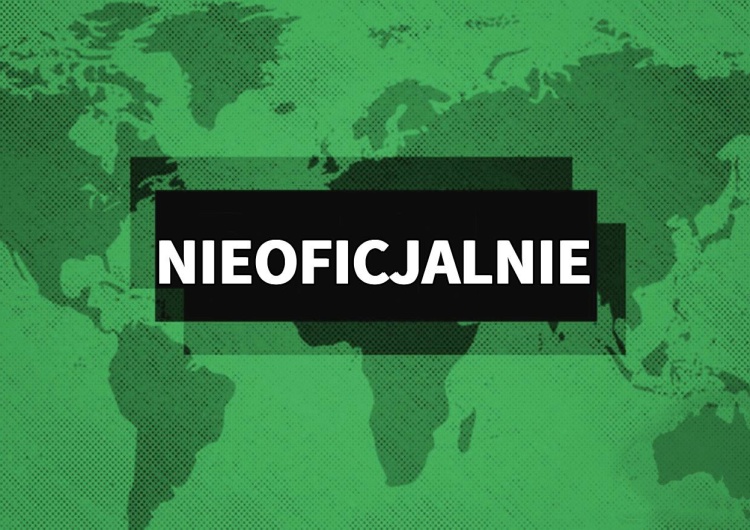- IDPS = “Independently Derived Positioning System.” It’s a software-first navigation technology from TERN that computes position without relying on satellites (i.e., it can keep working when GPS is jammed, spoofed, blocked, or simply unavailable). Tern AI
- How it works (big picture): IDPS fuses pre‑loaded road maps, built‑in vehicle sensors (e.g., wheel speed, steering angle, and 3D motion/IMU data), and a proprietary AI engine to produce a live position fix—no cameras and no external beacons required. Tern AI
- Performance claims: TERN reports sustained ą4 m accuracy, >180 continuous miles of GPS‑free navigation, and successful operation under live GPS spoofing; TechCrunch likewise reports IDPS can achieve ≈4 m in line with DOT guidance—note these are vendor/press claims, not yet broadly validated by independent benchmarks. Tern AI+1
- Runs on what you already have: IDPS is designed for mid‑tier automotive processors, integrates with common mapping stacks (e.g., Google Maps/Waze/OSM/ESRI), and can run on smartphones, tablets, or in‑vehicle systems. Tern AI
- Use cases: Automakers (infotainment, ADAS resilience), fleets and delivery networks, emergency services, and government/defense agencies seeking resilient PNT (positioning, navigation & timing). Tern AI
- Why this matters now: Governments and regulators are pushing for GPS complements/alternatives as jamming/spoofing incidents rise; the FCC opened a proceeding in 2025, and U.S. PNT policy continues to prioritize resilience. Federal Communications Commission
- Protected IP: “IDPS” is the subject of a U.S. trademark application (Serial 98125968) and is listed by TERN with U.S. Patent US9618344B2 relating to digital‑map tracking methods. USPTO Report
- Don’t confuse it with cybersecurity “IDPS.” In security, IDPS usually means Intrusion Detection & Prevention System—a network defense tool—totally different from TERN’s navigation IDPS. Red Hat
In‑depth roundup
1) What is IDPS?
IDPS (Independently Derived Positioning System) is TERN’s AI‑powered positioning technology that determines where a vehicle (or device) is without depending on satellite signals. It’s pitched as a GPS alternative/backup that delivers uninterrupted turn‑by‑turn navigation through tunnels, parking garages, urban canyons, and other GNSS‑challenged areas. The product has garnered industry recognition (e.g., CES Innovation Awards). Tern AI+1
Legally, “IDPS” is covered by a pending U.S. trademark application filed by Tern AI LLC, which describes software and apparatus for navigation across automobiles, trucks, trains, boats, aircraft, and handhelds. TERN also lists US9618344B2 as patent coverage for related map‑tracking techniques. USPTO Report
Why the need? GPS/GNSS is a single point of failure for many services. U.S. agencies and the FCC have been moving to encourage complements/alternatives to GPS; policymakers have underscored the economic and national‑security risks of outages and interference. Federal Communications Commission
2) What is IDPS for?
- Automotive & mobility: Improve in‑dash navigation reliability (no “lost in the tunnel” moments), provide resilience for assisted/automated features that rely on constant localization, and avoid dependency on external infrastructure. Tern AI
- Fleets & logistics: Maintain accurate routing in depots, urban corridors, mixed‑level roadways, and remote routes; reduce delays from GPS dropouts and improve operational continuity. Tern AI
- Emergency services: Ensure responders keep an accurate fix during disasters, in dense cities, or when communications are degraded. Tern AI
- Government/defense (cPNT): Provide a signal‑independent layer for resilient PNT amid rising jamming/spoofing and geopolitical risks. Tern AI
3) How IDPS works (the three pillars)
a) Base maps. IDPS uses pre‑loaded map data—public or proprietary—to “understand” the road network, so it can constrain and validate likely paths even when satellites are unavailable. It can integrate with existing map platforms (e.g., Google Maps, Waze, ESRI/ArcGIS, OSM). Tern AI
b) Vehicle sensors you already have. It ingests wheel speed, steering angle, and 3D motion (IMU) data directly from the vehicle—no extra cameras or external beacons—to track motion continuously. This sensor‑first approach works anywhere the vehicle can move. Tern AI
c) AI fusion and self‑healing. A proprietary AI engine fuses sensor inputs with map constraints to predict, confirm, and refine the position in real time. TERN emphasizes adaptive weighting and continuous drift correction (contrasting it with dead‑reckoning/INS that accumulates error when unaided by GPS). Tern AI
Compute footprint & deployment. According to TERN, IDPS can run with <20% CPU on mid‑tier automotive processors, supports offline operation, and can be deployed as software‑only on phones, tablets, or IVI systems. Tern AI
4) What accuracy and testing exist?
- Vendor & press‑reported results. TERN states IDPS sustained ą4 m over long distances, completed >180 miles GPS‑free, and operated under live GPS spoofing. TechCrunch reported IDPS hits ≈4 m—“in line with DOT guidance for emergency services”—noting testing aligned to DOT frameworks. These are claims from the company or press; broad independent third‑party evaluations are still scarce publicly. Tern AI
- Demonstrations. TERN showcases side‑by‑side runs (e.g., Chicago’s Lower Wacker) where conventional GPS drifts or freezes while IDPS maintains the trace underground. Tern AI
- Recognition & ecosystem validation. Arm highlights TERN as a signal‑free positioning partner, and IDPS has been recognized at CES Innovation Awards—indicators of momentum rather than definitive proof of performance. Arm
Context: GPS vulnerabilities (jamming/spoofing) have been documented across aviation and maritime domains, sharpening the call for resilient alternatives. Aviation Week Network
5) Who is IDPS intended for?
- Automakers & Tier‑1s: To bolster IVI navigation continuity and provide a fallback to GNSS for positioning‑dependent features (e.g., lane‑level guidance in urban canyons). Tern AI
- Fleet operators & delivery platforms: To cut misroutes and delays from GPS dropouts in dense or subterranean environments and improve KPIs like on‑time delivery. Tern AI
- Emergency response & public safety agencies: To maintain reliable positioning when cellular or GNSS is degraded—during wildfires, storms, or urban incidents. Tern AI
- Defense & government programs (cPNT): As complementary PNT for contested environments or continuity of operations when GNSS is targeted or unavailable. Policy and regulatory moves in 2024–2025 (FCC NOI; ongoing PNT policy) support this direction. Federal Communications Commission
- Developers & platform integrators: Because it’s software‑only with broad mapping compatibility, IDPS can be embedded in apps or services that need resilient positioning without new hardware. Tern AI
6) Where IDPS fits among GPS alternatives (the broader PNT landscape)
IDPS is device‑centric (no external signals), which distinguishes it from network‑ or signal‑centric approaches:
- Terrestrial PNT (e.g., NextNav TerraPoiNT): Proposes a nationwide terrestrial 3D PNT layer; Brattle Group estimates a GPS backup could save $14.6B in economic value across scenarios—illustrating the scale of benefits if alternatives are deployed. NextNav
- LEO satellite PNT (e.g., Satelles/Iridium STL): Provides timing & location using stronger LEO signals that can penetrate indoors—useful for timing‑critical infrastructure; it’s available commercially today. Satelles, Inc.
- Broadcast/ATSC‑based timing (BPS): DOT recently funded NAB field tests of Broadcast Positioning System for resilient timing—another complementary layer. TV Tech
Takeaway: IDPS adds a self-contained (no new spectrum, towers, or satellites) layer that can coexist with terrestrial and LEO solutions to harden PNT. Regulators increasingly favor a multi‑layered approach. Federal Communications Commission+1
7) How IDPS differs from dead reckoning and INS
Traditional automotive dead reckoning and inertial navigation systems (INS) rely on unaided sensor integration and accumulate drift over time. TERN positions IDPS as continuously self‑healing—using AI and map constraints to bound and correct drift, yielding better endpoint accuracy over long, GPS‑free stretches. Tern AI
8) Security & privacy notes
Because IDPS computes position locally from onboard sensors and preloaded maps, it reduces exposure to RF attacks (e.g., spoofing/jamming) that target satellite signals. That doesn’t eliminate all risk (maps can be wrong; sensors can be noisy), but it removes the satellite link as an attack surface—a key resilience advantage cited by TERN and echoed by broader PNT policy discussions. Tern AI
9) Intellectual property and product status
- Trademark: “IDPS” is the subject of U.S. trademark serial 98125968 (intent‑to‑use), covering navigation software/hardware categories across vehicles and handhelds. Status: live/pending at time of writing. USPTO Report
- Patent: US9618344B2 (“Digital map tracking apparatus and methods”) covers techniques relevant to fusing motion/directional data with digital maps. Google Patents
10) Limitations & open questions
- Independent testing: Much of the public data are vendor demonstrations and press coverage. Broader, third‑party, head‑to‑head evaluations versus GNSS‑aiding, terrestrial PNT, and other map‑matching systems would help buyers quantify tradeoffs across environments and platforms. TechCrunch
- Map dependence: Accuracy depends on map quality and update cadence; complex or changing road geometries can challenge any map‑constrained approach (TERN says IDPS adapts to construction/temporary changes via AI). Tern AI
- Ecosystem integration: While software‑only is attractive, production automotive programs need functional safety, validation, and lifecycle support. (TERN markets integration with existing stacks and mid‑tier processors; OEM evaluations are ongoing per press reports.) Tern AI
FAQs
Is IDPS a drop‑in replacement for GPS?
It can operate without satellites and can replace or complement GPS depending on the integration; many deployments will likely use both for redundancy (a “belt‑and‑suspenders” approach). Tern AI
Does IDPS need cameras or LiDAR?
No—TERN states no vision inputs are required; IDPS relies on 3D motion and vehicle signals. Tern AI
Can IDPS run on a phone?
Yes. TERN indicates it can run on smartphones/tablets as well as in‑vehicle systems. Tern AI
What about the other “IDPS” I know from cybersecurity?
Different concept entirely. In security, IDPS = Intrusion Detection & Prevention System—a network security control that monitors and blocks threats. Red Hat
Bottom line
IDPS is a software‑driven, signal‑independent positioning system designed to keep navigation online when GPS drops out. It’s most compelling for automotive, fleets, emergency services, and cPNT programs that need to harden localization without adding new radios or cameras. As regulators push a multi‑layered PNT strategy, IDPS provides a device‑centric layer that complements terrestrial and LEO alternatives—promising, but still awaiting wider independent validation at scale. Tern AI
Sources & further reading
- TERN product pages (“How it works,” “Why IDPS?”) for architecture, capabilities, and claims. Tern AI
- TechCrunch coverage of TERN’s approach and 4‑meter accuracy target. TechCrunch
- Arm success story highlighting signal‑free positioning on Arm compute. Arm
- CES Innovation Awards listing for IDPS. CES
- USPTO trademark record (Serial 98125968) and Google Patents (US9618344B2) for IP context. USPTO Report
- U.S. PNT policy (gps.gov) and FCC NOI on GPS alternatives (2025). gps.gov
- OPSGROUP 2024 report & Aviation Week analysis on GPS spoofing/jamming for threat background. OpsGroup
Note: This article focuses on TERN’s IDPS (navigation). For cybersecurity IDPS (intrusion detection & prevention systems), see authoritative definitions from Red Hat and NIST.







